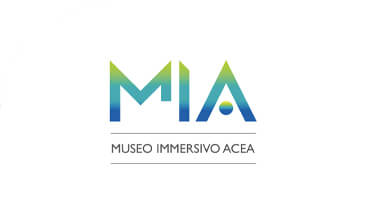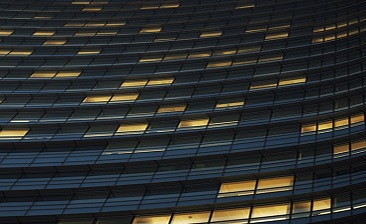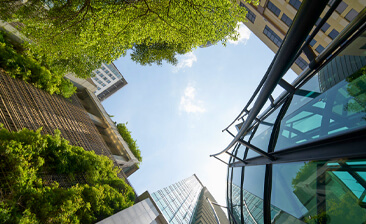
Acea for World Energy Saving Day
Piazza del Campidoglio in Rome is one of the most famous and iconic squares of the city and owes its name to the head of the warrior named Tolo found during the excavations for the foundation of the temple of Jupiter Capitolinus. Designed by Michelangelo Buonarroti in the 16th century, it was built on the Capitoline Hill, one of the seven hills of Rome, chosen to host the first Roman settlements. A symbolic place for political power, since the 12th century this square has housed the Palazzo Senatorio, headquarters of the Municipality of Rome and its Senator, and today of the representation office of Rome Capital.
Piazza Campidoglio has been designed by Michelangelo, who started the works in 1536.
The square already housed the equestrian statue of Marcus Aurelius, dating back to the 2nd century AD, and later welcomed the Palazzo dei Conservatori and the Palazzo Nuovo, both dating back to the Renaissance period and now housing the Capitoline Museums.
Between 1534 and 1538, Michelangelo Buonarroti completely redesigned Piazza del Campidoglio, turning it towards the Roman Forum, symbol of the political centre of the city.
He had the idea of building a new palace to close off the perspective towards the basilica of Santa Maria in Aracoeli, and to pave the square by eliminating the dirt road. He also designed the Cordonata stairway and the balustrade overlooking the underlying Piazza d'Aracoeli. The equestrian statue of Marcus Aurelius was moved from Piazza San Giovanni to the centre of the square designed by Michelangelo.
Dating back to the 2nd century AD, the statue of Marcus Aurelius is the only bronze statue that remained almost intact after the collapse of the Western Roman Empire. For this reason, it not only represents an important historical document, but has also been taken as a model for all works of art with horses.
Since 1990, the statue has been kept in the Palazzo dei Conservatori to preserve it from deterioration due to atmospheric agents, and a copy without the gilding present on the original has been placed in the square.
The ancient Basilica of Santa Maria in Aracoeli, located on the northern top of the Capitoline hill, originally called Santa Maria in Capitolio, was built in the 6th century and then renovated in the 13th century.
The Sala Rossa of the Campidoglio takes its name from the colour of its tapestries and carpets. It is the most coveted place to celebrate civil weddings in the city of Rome. The other equally important hall is the Protomoteca, used to set up the chapel of rest of various Italian personalities who have played a significant role in the country's culture, sport or politics.
The new lighting of the Campidoglio was created by Acea, in collaboration with the Capitoline Supervisory Authority and the Archaeological Supervisory Authority (MIBACT).
The new system is made up of 566 LED bulbs which illuminate the Campidoglio, the Capitoline Museums, the square on the front, the arcades and one of Rome’s many fountains — the fountain of the Dea Roma.
Moreover, Acea created the lighting of the Basilica of San Marco Evangelista al Campidoglio, located in Piazza Venezia. The intervention involved the lighting of the church façade, portico and upper loggia.
The light flux was directed towards the cross vaults, highlighting their structure. The low relief of San Marco (Saint Mark) emerges from the depths of the space with all its details, highlighted by two specially dedicated luminaires.
The Campidoglio, one of the seven hills of ancient Rome, became the site of important religious establishments such as the Temple of Jupiter Capitolinus, venerated together with the other two divinities of the Capitoline triad: Juno and Minerva. Legend has it that a human skull with its face intact was found, which for some was the skull of the Etruscan leader Aulus Vibenna, while for others the head of a statue, perhaps of the goddess Tarpeia — the goddess of war and death. In these cases, at that time, haruspices were invoked, i.e. priests who interpreted the entrails of sacrificed animals. They concluded that the head meant that Rome would become the “caput mundi”, that is, the capital of the world.
Another legend tells of an imaginary treasure hidden under the ancient sanctuary, made of precious objects, gold and silver. However, despite the search campaigns, excavations and demolitions that have involved the area, this treasure has never been found.
The Capitoline Museums hold an important record: they are considered the first public museums in the world. Their history dates to 1471, when Pope Sixtus IV della Rovere decided to gift the city with a group of bronze statues characterised by an important symbolic value: the Lupa (Capitoline Wolf), the Spinario (Boy with Thorn), the Camillo (Camillus) and the colossal head of Constantine, with the globe and the hand.
The Campidoglio, centre of Ancient Rome’s administrative and religious life, was chosen to host these precious works of art. Over the years, the collection grew significantly, and was distributed between the Palazzo Nuovo and the Palazzo dei Conservatori. The collection became open to the public in 1734, thanks to Pope Clement XII Corsini, who chose to purchase the collection of antiquities from Cardinal Albani so to make it available to the Roman people.
Discover the latest news and initiatives of the Acea Group

Acea for World Energy Saving Day

Visit the virtual museum about the history of the Acea Group

The channel for the commercial requests on land urbanisation

Acea turns the spotlight on the Rome Film Festival 2023

Acea is in the "Gold class" in the .trust research

Read more about our culture of inclusiveness